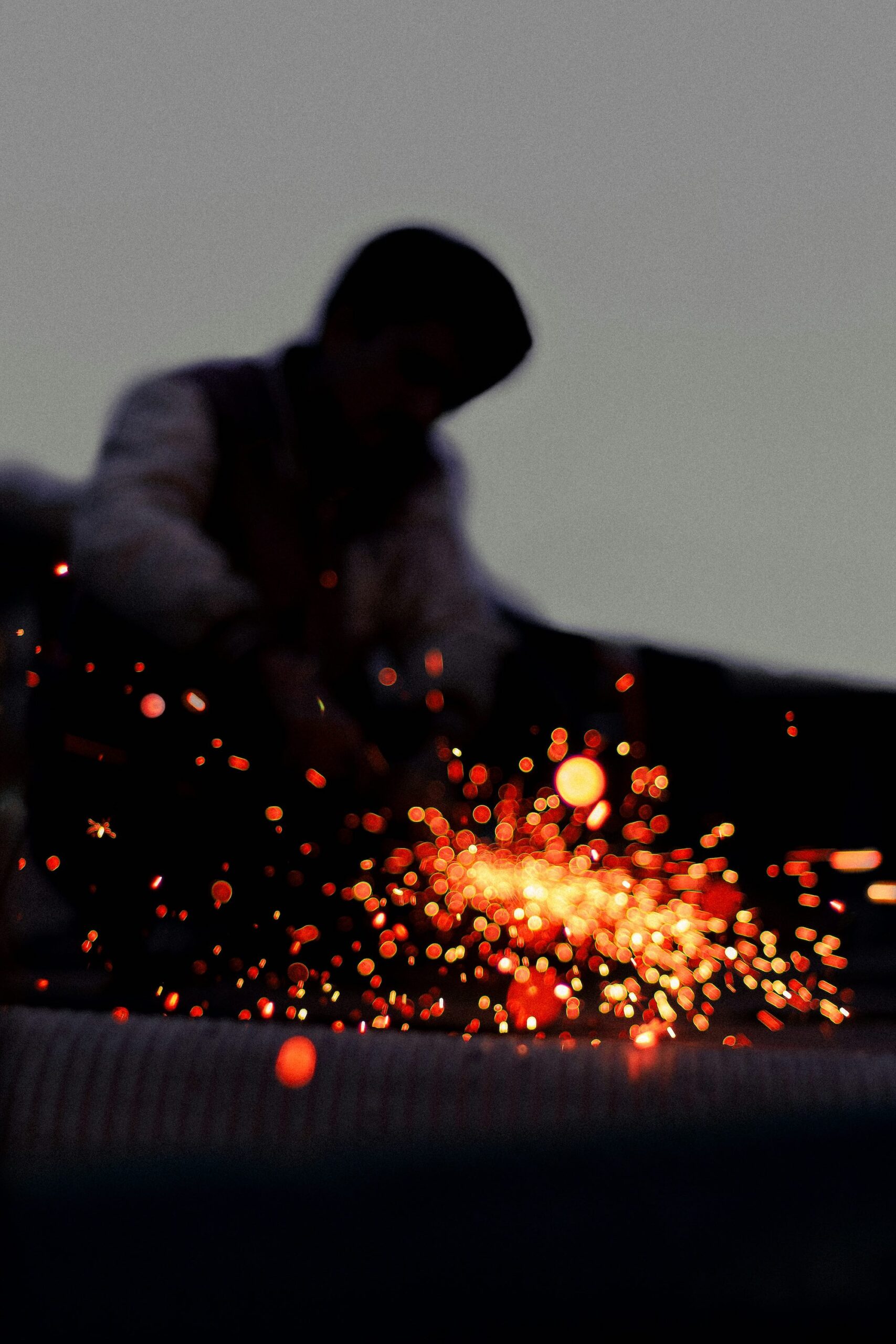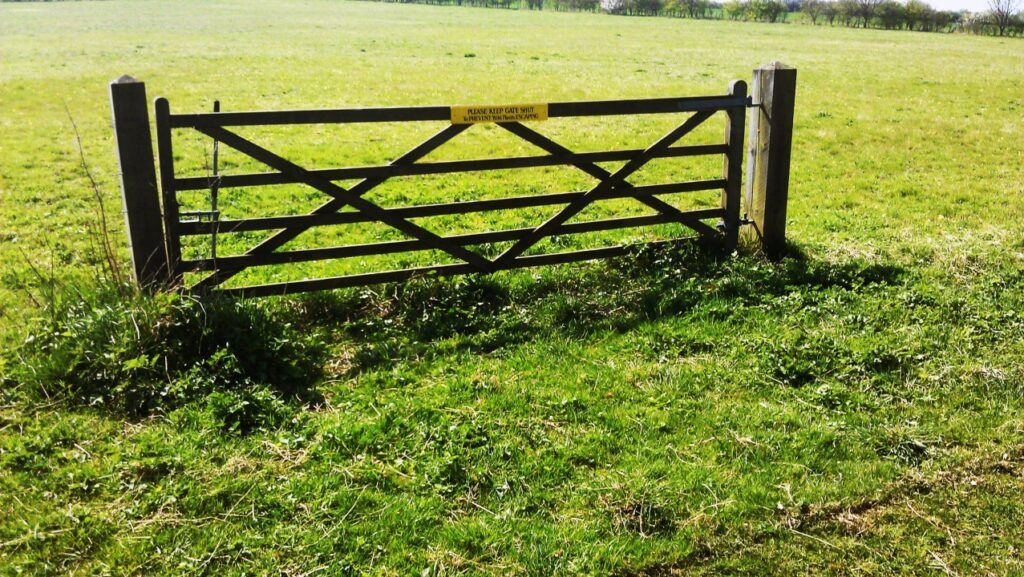I myself am a consultant by trade and the founder of a consulting company. I approach my work as a craftsperson (and it so happens I was raised by multiple generations of craftspeople). This is my personal approach as a craft-consultant (along with inspiration from people I admire), and I share it for others to adopt, adapt, question, or even reject.
01
Pursue mastery, however elusive. Financial rewards and other forms of recognition are vital (a vow of poverty is not at all advised), but a craftsperson is foremost motivated by improving their abilities and, as a result, project outcomes. Mastery may only be attained through study, practice, listening, reflection, and time.
Craftsmanship names an enduring, basic human impulse, the desire to do a job well for its own sake.
Richard Sennett
02
Study obsessively. Study your contemporaries as well as those who came before you. Study literature, but also study in the flesh. Study others not to simply mimic their approach or borrow their ideas, but to understand their mental models, their social and historical contexts, and their efficacy. As you study, hold two thoughts simultaneously: that some of the best ideas have been long forgotten and are waiting to be rediscovered, AND that there are new frontiers to invent for yourself.
In order to make delicious food, you must eat delicious food. The quality of ingredients is important, but one must develop a palate capable of discerning good and bad. Without good taste, you can’t make good food. If your sense of taste is lower than that of the customers how will you impress them?
Chef Jiro Ono
03
Practice the work. Over and over and over again. If you’re early in your career, gulp new opportunities for practice. Expect and embrace repetition. (Even the same request, for example, can produce wild variability in terms of the effort required.) In practice, always aim to practice perfect: extend your best effort and most thoughtful attention even when no one is watching. Endless practice will not produce gains, though, if you don’t believe in your ability to learn and improve. You must adopt a growth mindset. You must believe you can grow and you must acknowledge when you have grown (even if that growth is incremental).
04
Listen like an apprentice. Early on, listen to those more experienced than you in your craft. As you develop, seek out and listen to those outside your craft (you may not understand them fully, but they will inspire you in new ways). And most importantly, listen to those impacted by your work, where theory disintegrates against lived experience. Seek criticism and hone your ability to discern helpful from unhelpful feedback. In all, gather a diverse chorus of voices in your head.
05
Hone your ability to reflect without filter. Avoid following trends or transient tastemakers unconsciously. Craft endures where fashion fades. Stop and step back, not to simply admire your handiwork but to review your process and its results. Reflect, even, on your reflections. Interrogate where your critical voice originates, how you define productivity and project success, and what you will apply to future practice.
The painting of this morning is no good, but I was much excited over it—and know that something will come.
Georgia O’Keeffe
06
Learn the art of waiting. Wisdom is cultivated not solely from effort, but from time itself. Nurture patience and practice persistence. To become a craftsperson, you must learn to find sustaining reward in doing the work well, as the fruits of your labor may take considerable time to ripen. Resist our culture’s overreliance on instantaneous feedback and fleeting affirmations. Don’t work for the likes.
Patience is not a virtue. It is an achievement.
Vera Nazarian
07
Embrace your full craft. As a consultant, mastery of the craft encompasses not just specific areas of practice (in my case, organizational design and change management) but it also must include (among other skills) client management and sales. A mistake I see too many craft-consultants make it is to denigrate client management and sales. I myself made this mistake early in my career. Knowing how to attract good clients and learning how to lead clients through complex projects is essential to producing good project outcomes.
08
Know who you serve and how to serve them well. From experience, I believe there are generally two types of consulting clients. Type One hires you because you have either expertise or perspective they don’t have. Type Two hires you simply because they lack the capacity to do the work themselves. Type One hires you for your brain. Type Two hires you for your hands. There is plenty of work to be done for Type Two clients, but this work rarely makes you smarter at your craft beyond client management and obsessive attentiveness. This can be frustrating, but remember: client management is a skill you must learn and is often best gained with a demanding client. Second, you have to earn the right to work for Type One clients. Crucially, know which type of client you have attracted, know why you have agreed to fulfill their needs, and know how you’ll approach the project.
09
As you progress and mature, reduce your dependence on rigid Type Two clients. Yes, they may provide immediate economic security, but often these projects will slide into unprofitability because of constant client hand-holding. First, do your best to counsel these clients into becoming Type One (help them see your expertise and trust your advice). If this seems unlikely, remember that you can say “no” to new projects and still be helpful (i.e., while preserving your good name). Keep a network of peers that you can pass the work to, and be transparent with them about the type of client you are passing along. Crucially, you will learn over time that saying “no” to a Type Two client often frees you to find new ways to attract more Type One clients.
10
Plan, but not too much. Clients, regardless of type, want an expectation of the work ahead. Junior consultants, when developing a project plan, will attempt to spell out and pre-define every moment of activity along an ambitious timeline. This is because junior consultants have yet to learn that the universe is not a Swiss watch. Craft-consultants will understand that there are both inevitable milestones as well as a wide range of alternative routes and potential pitfalls. Craft-consultants will plan, but in wider brushstrokes, because they understand the security of structure as well as the need for improvisation.
Working without a plan may seem scary. But blindly following a plan that has no relationship with reality is even scarier.
Jason Fried
11
Be faithful to all of your clients, past or present. This should be obvious. However, Type One clients may hire you for your general knowledge of the industry and possibly even your work with their direct competitors. After all, the big consulting companies scaled by distributing other people’s secrets. Plenty of consultants spill this tea, but a craft-consultant should not. Remember that every client is a partner in the project’s success and that you owe fidelity to all of your partners (internal and external).
12
Improve both the seen and unseen. There are some who ascribe to the duck-on-water philosophy: appear graceful when in view and accept anything, including frenzied disorder, behind the scenes. Craft-consultants chafe against these conditions. In time, everything can be improved and everything can be attended to. If a client hires you to solve a specific problem but you find a previously unseen issue, it’s your duty to raise the issue and present possible solutions. A client may ignore or defer this work, but you’ll know that you were committed to the improvement of the whole. Moreover, bring this attitude to your own tools and processes, improving even those things that your client doesn’t directly interact with.
13
Do not neglect the role of repair. A leap to radical reform, without an understanding of existing systems, processes, tools, etc., can cause unknowable harm and chaos. Follow Chesterton’s Fence and understand the role a process or precept plays before revoking it. Moreover, accept that small interventions often have the greatest impact and yet least personal fame. Again, embrace the goal of mastery above all else.
14
Protect the project’s best interest. There will be times when a client (regardless of type) wants you to do something that you know is not in their or their project’s best interest. A craft-consultant doesn’t immediately acquiesce to this demand. In moments like this, adopt the persona of a family doctor and say something along the lines of, “I hear that you want this, but in my experience this isn’t the right course of action for reasons X, Y, and Z. I would strongly suggest that we try this alternative instead to produce our desired outcome. With all of that said, tell me why you might think this is still the wrong approach.” Give your client the benefit of your experience, yet also allow for the possibility in your own mind that your client might actually have insight into the situation that you do not (Bill Bernbach, the legendary ad-exec was said to have always carried a card in his pocket, referring to his clients, that only said “They might be right.”). In general, I’ve found that you only have one occasion per project to strongly push back against a client, so be careful not to waste it on an inconsequential or cosmetic difference of opinion. If you do settle on moving forward against your best advice, be conscious to note it but be careful not to devolve the relationship into endless “told you so’s” in the future. While it’s difficult contractually, you can separate yourself from a project.
15
Put your tools in perspective. As a consultant, our tools generally involve either a model or process. A model is a means to conceptualize a complex idea in such a way that makes it understandable and malleable (e.g., the Leo-Burnett Brand Model). A process is a step-by-step guide to producing a desired outcome (e.g., design thinking). Yes, we must endeavor to understand our tools (especially those that came before us and/or were not created by us) and understand when to wield them. However, we must not fetishize our tools or come to see them as the end-all, be-all of our work. Our tools should produce good outcomes for our clients, not just good clicks on our articles. In my opinion, there are too many who define themselves as consultants by drawing circles on Medium articles. The saying goes that, “all models are wrong, some are useful,” so when a model fails to be useful in comparing successful vs unsuccessful outcomes, it should be revised or retired. If a process repeatedly produces suboptimal outcomes, then it should be amended based on experience. A craftsperson doesn’t blame their tools for any blemishes, they accept the blame as the hand that both chose and wielded the tool.
16
Separate hustle from productivity. Productivity is essential to mastery, maximizing your impact as a function of your effort and time. Hustle, these days, is largely a personal marketing ploy. Just as Benjamin Franklin would arrive at his shop early to turn on the lights for all to see how industrious he was (while he napped in the back), today’s folks brag about their lack of sleep and inattentiveness to life outside work. The goal of hustle isn’t mastery, it’s attention. Yes, you might have to work late at times to reach a deadline, and yes, you may have to marshal your creativity to reach new clients or cover costs, but remember your ultimate goal of mastery and that haste compounds waste. Hustlers rarely become masters.
17
Negotiate acceptable tolerances. Defining acceptable tolerances (i.e., how good is “good”) is crucial to any successful project outcome. This must be done up front with your client as well as on an ongoing basis during the project. You should reflect on who will approve the work (and their expectations), how long the work is expected to last (e.g., does this need to apply to the next few months, or far longer), and your client’s appetite for experimentation. My personal approach is to treat every organizational intervention as an experiment (able to be scaled up or squashed based on evidence), but I have to vet that bias with my clients and adjust expectations accordingly.
18
Nurture a (truly) harmonious workplace. Craftspeople want the majority of their attention focused on their craft. In our modern workplace, this requires both reducing technological distraction (silence those notifications) as well as confronting interpersonal differences and personal feelings head-on. Workplace strife should not be allowed to fester and should be approached with a desire to seek mutual understanding, increase overall psychological safety, and pursue meaningful resolution. Harmony cannot be faked, though, and requires courage, empathy, and dialog. When at its best, workplace culture results in healthy competition where “iron sharpens iron” and our colleagues accelerate us toward mastery.
19
Make space for play. A pursuit of craft and mastery is often portrayed in culture as a monk-like approach: severe, restrained, and exacting. In reality, craftspeople relish pleasure, amusement, tactile response, and creativity. In both personal development and mentorship, do not ignore the benefits of play. As a craft-consultant, start with internal run-throughs and let your people test traditional boundaries of client delivery.
20
Expand the community. As I relate craft to consulting, it’s important to recognize that, historically, craft communities have been exclusionary and homogenous. In the past, this was out of fear of commodification, as well as a fear of others. As craftspeople today, we must acknowledge both the moral and business cases for diversity and inclusion. Anyone deeply consumed with the work and deeply vested in the goal of mastery is our kin, and is equally deserved of opportunities and our esteem. As craft-consultants, we are called to create places of community where our kin can gather and hone their craft.
21
Foster the next generation. Finally, as a craft-consultant, you owe those coming up behind you the benefit of your accrued wisdom. Craft know-how evolves first from costly and isolated trial and error, to hand-me-down best practices, to true communities of art and science only through a long relay race of mentorship. This work is often done through local communities and one-to-one interactions, where the work itself can be shown, not only described. After this lengthy dissertation, my only hope (if you have made it this far) is to follow, or even better, my example. Share what you’ve learned.
If it’s flipping hamburgers at McDonald’s, be the best hamburger flipper in the world. Whatever it is you do you have to master your craft.
Snoop Dogg













